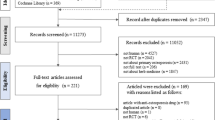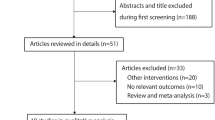Abstract
Summary
This multicenter and randomized clinical trial showed that daily oral herbal formula Xian Ling Gu Bao (XLGB) was safe in postmenopausal women over a 1-year treatment. Those patients (n ∼ 50) treated with XLGB at the conventional dose demonstrated a statistically significant increase in dual-energy X-ray absorptiometry (DXA) bone mineral density (BMD) at lumbar spine at 6 months and a numerically increased BMD at 12 months.
Introduction
The aim of this study was to examine the safety and efficacy of a herbal formula XLGB in postmenopausal women (ChiCTR-TRC-00000347).
Methods
One hundred eighty healthy postmenopausal women (≥60 years old) with BMD T-score ≤ −2.0 (lumbar spine or femoral neck) were recruited from four clinical centers to receive low-dose (conventional dose) XLGB (L-XLGB group, 3 g/day, n = 61) or high-dose XLGB (H-XLGB group, 6 g/day, n = 58) or placebo (CON group, n = 61). Women received daily calcium (500 mg) and vitamin D (200 IU) supplementation. Primary endpoints were lumbar spine BMD and safety; secondary endpoints were femoral neck BMD and bone turnover markers measured at baseline and at 6 and 12 months.
Results
Of 180 women recruited, 148 completed the study. The compliance in each group was comparable. Prominent adverse events were not observed in either group. In the L-XLGB group at 6 months, lumbar spine BMD by DXA increased significantly from baseline (+2.11% versus CON +0.58%, p < 0.05), but femoral neck BMD did not; at 12 months, BMD in the L-XLGB group decreased from 6-month levels yet remained higher than baseline, but without difference from the CON group. There was no dose-dependent response. Bone turnover marker levels declined during the first 6 months after XLGB treatment. There was no significant difference in the overall incidence of side effects among treatment and control groups.
Conclusion
XLGB over 1-year treatment at the conventional dose demonstrated safe and only a statistically significant increase in BMD at lumbar spine at 6 months in postmenopausal women.



Similar content being viewed by others
References
Adomaityte J, Farooq M, Qayyum R (2008) Effect of raloxifene therapy on venous thromboembolism in postmenopausal women: a meta-analysis. Thromb Haemost 99:338–342
Aldrighi JM, Quail DC, Levy-Frebault J et al (2004) Predictors of hot flushes in postmenopausal women who receive raloxifene therapy. Am J Obstet Gynecol 191:1979–1988
Consensus Development Conference (1991) Diagnosis, prophylaxis and treatment of osteoporosis. Am J Med 90:107–110
Cummings SR, Ettinger B, Delmas PD, Kenemans P, Stathopoulos V, Verweij P, Mol-Arts M, Kloosterboer L, Mosca L, Christiansen C, Bilezikian J, Kerzberg EM, Johnson S, Zanchetta J, Grobbee DE, Seifert W, LIFT Trial Investigators (2008) The effects of tibolone in older postmenopausal women. N Engl J Med 359:697–708
Chen YM, Ho SC, Lam SS, Ho SS, Woo JL (2004) Beneficial effect of soy isoflavones on bone mineral content was modified by years since menopause, body weight, and calcium intake: a double-blind, randomized, controlled trial. Menopause 11:246–254
Cooper C (1990) Bone mass throughout life: bone growth and involution. In: Francis RM, Dick WC (eds) Osteoporosis: pathogenesis and management. Kluwer, Dordrecht, pp 1–26
FDA (1997) Guidelines for preclinical and clinical evaluation of agents used in the prevention or treatment of postmenopausal osteoporosis. Division of Metabolism and Endocrine Drug Products, Food and Drug Administration, USA
Gong Y, Yip SC, Thamarai SK, Zhang J, Lee HK, Yong EL (2007) LC-MS/MS method for the simultaneous determination of icariin and its major metabolites in rat plasma. J Chromagr Aanaly Technol Biomed Life Sci 860(2):166–172
Huntley A (2004) The safety of black cohosh (Actaea racemosa, Cimicifuga racemosa). Expert Opin Drug Saf 3:615–623
Khosla S (2009) Increasing options for the treatment of osteoporosis. N Engl J Med 361:818–821
Kreijkamp-Kaspers S, Kok L, Grobbee DE, et al (2004) Effect of soy protein containing isoflavones on cognitive function, bone mineral density, and plasma lipids in postmenopausal women: a randomized controlled trial. JAMA 292:65–74
Lee WT, Cheung CS, Tse YK, Guo X, Qin L, Ho SC, Lau J, Cheng JC (2005) Generalized low bone mass of girls with adolescent idiopathic scoliosis is related to inadequate calcium intake and weight bearing physical activity in peripubertal period. Osteoporos Int 16:1024–1035
Li J, Lee L, Gong Y, Shen P, Wong SP, Wise SD, Yong EL (2009) Bioassays for estrogenic activity: development and validation of estrogen receptor (ER alpha/ER beta) and breast cancer proliferation bioassays to measure serum estrogenic activity in clinical studies. Assay Drug Dev Technol 7(1):80–89
Putnam SE, Scutt AM, Bicknell K, Priestley CM, Williamson EM (2007) Natural products as alternative treatments for metabolic bone disorders and for maintenance of bone health. Phytother Res 21:99–112 (Review)
Qin L, Zhang G, Shi YY, Lee KM, Leung PC (2005) Prevention and treatment of osteoporosis with traditional herbal medicine. In: Deng HW et al (eds) Current topics of osteoporosis. World Scientific Publisher, Singapore, pp 513–531
Qin L, Committee. Chinese Osteoporosis Foundation (2006) General guidelines for R&D of traditional Chinese medicine and its preclinical evaluation and clinical trails in prevention and treatment of osteoporosis and fragility fractures. People’s Medical Publishing House, Beijing
Qin L, Zhang G, Hung WY et al (2005) Phytoestrogen-rich herb formula ‘XLGB’ prevents OVX-induced deterioration of musculoskeletal tissues at hip in old rats. J Bone Miner Metab 23:55–61
Rossouw JE, Anderson GL, Prentice RL, Writing Group for the Women’s Health Initiative Investigators et al (2002) Risks and benefits of estrogen plus progestin in healthy postmenopausal women: principal results from the Women’s Health Initiative randomized controlled trial. JAMA 288:321–333
Reeve J (1996) Clinical assessment of the physical properties of bone. In: Compston JE (ed) Osteoporosis: new perspectives on causes. Prevention and treatment. Royal College of Physicians of London, London, pp 41–53
Setchell KD, Lydeking-Olsen E (2003) Dietary phytoestrogens and their effect on bone: evidence from in vitro and in vivo, human observational and dietary intervention studies. Am J Clin Nutr 78(suppl 3):593S–609S
Tempfer CB, Froese G, Heinze G, Bentz EK, Hefler LA, Huber JC (2009) Side effects of phytoestrogens: a meta-analysis of randomized trials. Am J Med 122(10):939–946
Wong SP, Shen P, Lee L, Li J, Yong EL (2009) Pharmacokinetics of prenylflavonoids and correlations with the dynamics of estrogen action in sera following ingestion of a standardized Epimedium extract. J Pharm Biomed Anal 50(2):216–223
WHO (1998) Guidelines for preclinical evaluation and clinical trials in osteoporosis. World Health Organization, Geneva
WHO (2000) General guidelines for methodologies on research and evaluation of traditional medicine. World Health Organization, Geneva
WHO (1993) World health organization regional office for the Western Pacific. Research guidelines for evaluating the safety and efficacy of herbal medicines. World Health Organization Regional Office for the Western Pacific, Manila
Xu W, Zhang YP, Yang M, Shen ZY, Zhang XM, Zhang WD, Li HY (2007) LC-MS/MS method for the simultaneous determination of icariin and its major metabolites in rat plasma. J Pharm Biomed Anal 45(4):667–672
Zhang G, Qin L, Shi Y (2007) Epimedium-derived phytoestrogen flavonoids exert beneficial effect on preventing bone loss in late postmenopausal women: a 24-month randomized, double-blind and placebo-controlled trial. J Bone Miner Res 22:1072–1079
Zhang G, Qin L, Hung WY et al (2006) Flavonoids derived from herbal Epimedium brevicornum Maxim prevent OVX-induced osteoporosis in rats independent of its enhancement in intestinal calcium absorption. Bone 38:818–825
Zhang G, Qin L, Sheng H et al (2009) A novel semisynthesized small molecule icaritin reduces incidence of steroid-associated osteonecrosis with inhibition of both thrombosis and lipid-deposition in a dose-dependent manner. Bone 44(2):345–356
Conflicts of interest
None.
Author information
Authors and Affiliations
Corresponding authors
Additional information
H.M. Zhu, L. Qin, P. Garnero, H.K. Genant, and G. Zhang are co-first authors.
Electronic supplementary material
Below is the link to the electronic supplementary material.
Supplement 1
CONSORT 2010 checklist of information to include when reporting a randomized trial (DOC 218 kb)
Rights and permissions
About this article
Cite this article
Zhu, H.M., Qin, L., Garnero, P. et al. The first multicenter and randomized clinical trial of herbal Fufang for treatment of postmenopausal osteoporosis. Osteoporos Int 23, 1317–1327 (2012). https://doi.org/10.1007/s00198-011-1577-2
Received:
Accepted:
Published:
Issue Date:
DOI: https://doi.org/10.1007/s00198-011-1577-2




